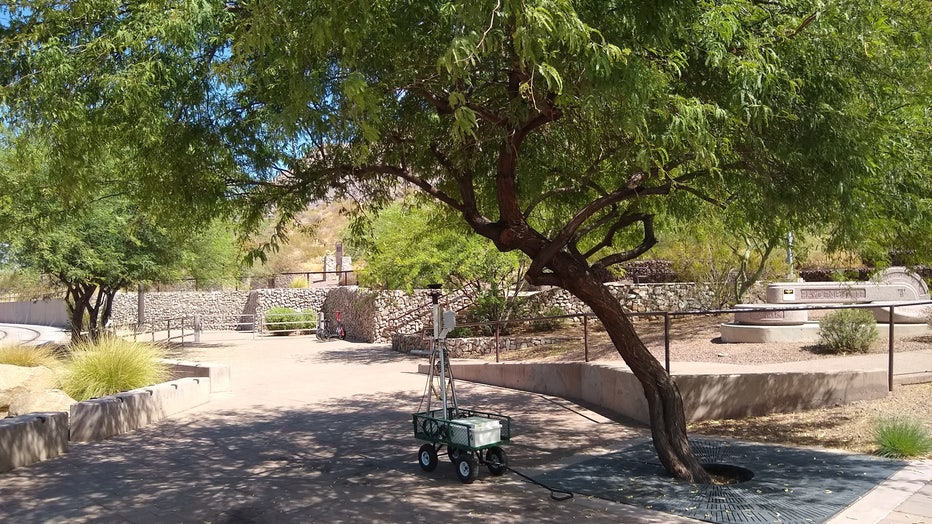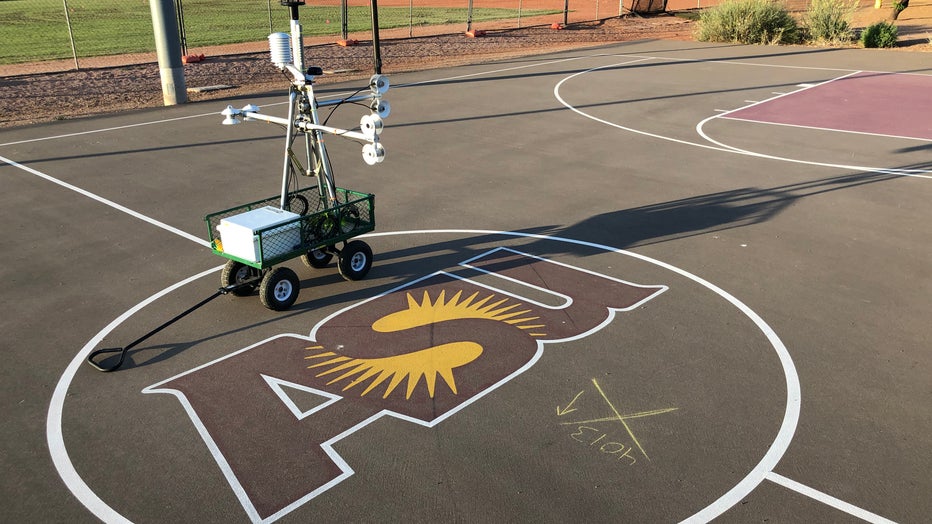ASU professor studies how different types of shade can help keep us cool in the heat

50 Grades of Shade: ASU professor studies how different types of shade can help keep us cool in the heat
FOX 10's Anita Roman reports.
TEMPE, Ariz. (FOX 10) - A walk through campus or down the streets of Tempe is essential when it comes to gathering data on shade.
"'MaRTy' is our prime research equipment, so 'MaRTy' can measure how you experience temperature," Dr. Ariane Middel said.

(Photo: Ariane Middel)
For two years now, assistant professor for the School of Arts, Media and Engineering at Arizona State University, Dr. Ariane Middel and her research assistant, Florian Schneider, have been studying 50 different types of shade.
"I realized that shade is really important here in this hot dry desert environment for people's comfort and there's a way to measure this using net-radiometry," Middel said. "Those measure the radiation that hit your body from all different directions. I was out this summer a ton of times, like morning to evening, basically 10 miles a day of walking this cart."
"MaRTy" has six net radiometers.
"You can look at the data that it's collecting here," Middel said. "When we have 45 percent humidity, which is really high, so that's why it's so muggy. Then there's the wind speed and direction."
The information gathered during the study has the potential to change the way policymakers think about, understand and plan for extreme heat.
"For example, when you have trees that have a lot of water, we don't have the water here," Schneider said. "Everyone wants to have trees. We want to change their way of thinking and still provide a good living space for people. There might be a sewer system underground or cables if there aren't many places you could put trees."
Middel says the question is can we use alternative shade types, like umbrellas, awnings and shade sails.
So far, the numbers indicate any shade that is more solid, like that from a building or tree with dense leaves, will be more effective.

(Photo: Ariane Middel)

